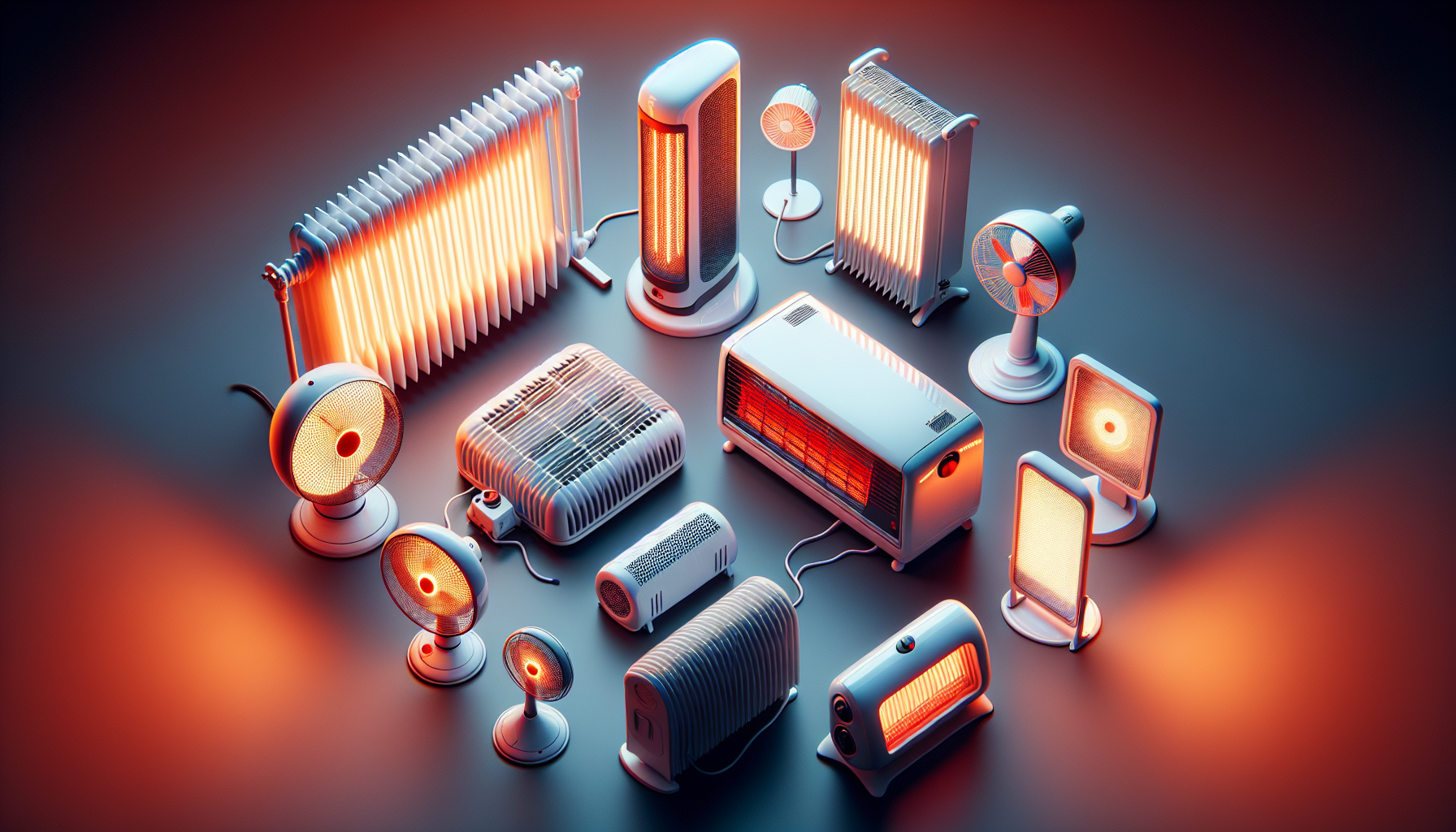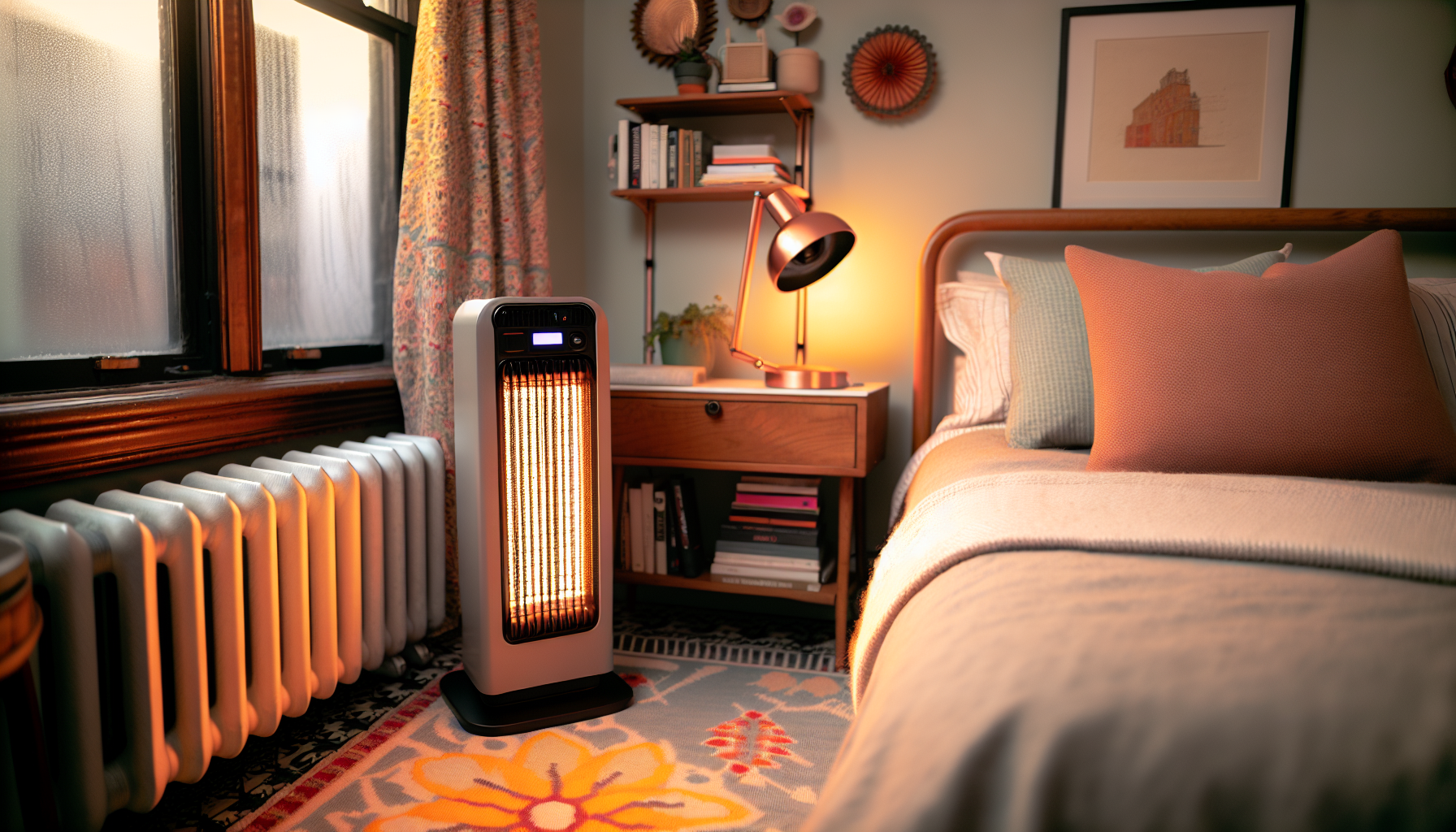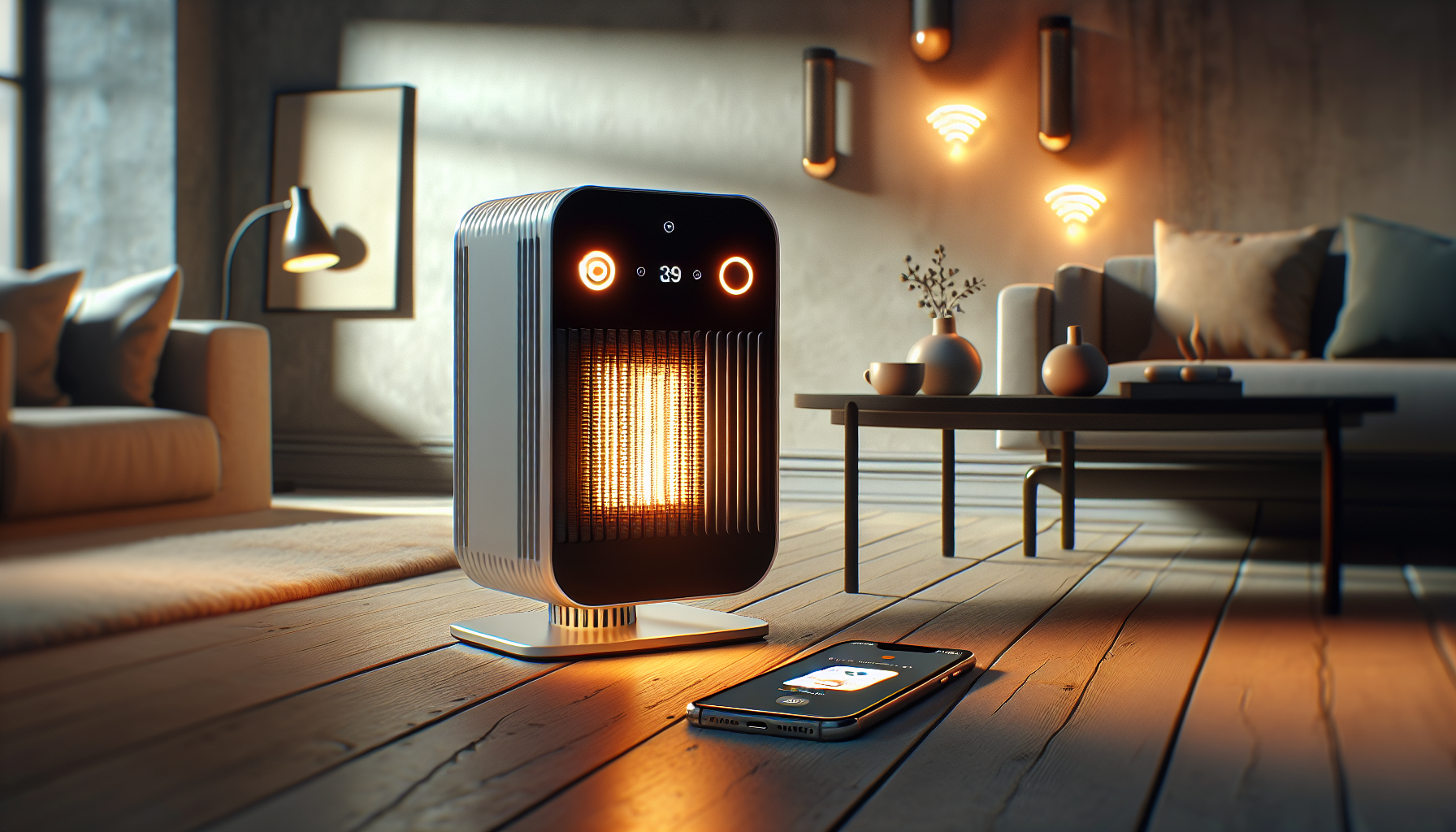Top Heater Electric Models Reviewed: Your Guide to Warmth & Efficiency
When the cold sets in, finding the right heater electric for your space is crucial for comfort and efficiency. This guide dives into the essential aspects of electric heaters, from the types that best suit different rooms to the features that enhance energy efficiency and safety. Discover the top heater electric models and make an informed decision that balances warmth, cost, and convenience, all with direct insights into improving your heating experience.
Key Takeaways
-
Electric heaters come in various forms like radiant, convection, fan, and panel heaters, each with distinct heating mechanisms suitable for different preferences and room sizes.
-
Energy efficiency in electric heaters is enhanced by features like thermostats, programmable timers, and Energy Star ratings, which contribute to lower utility bills and reduced environmental impact.
-
Safety in electric heaters is a top priority, with features such as overheat protection systems, cool-touch exteriors, and certified safety plugs; additionally, correct installation and maintenance practices are essential for safe, efficient operation.
Understanding Electric Heater Types

Exploring the world of electric heaters reveals a myriad of choices, each distinctive in its method of delivering comfort. Take radiant heaters as an example:
-
They resemble the sun’s rays on a frosty morning
-
They transfer heat directly to objects and people efficiently, bypassing the energy loss commonly linked with air heating
-
They’re ideal for those seeking immediate warmth without the wait, making them a favored choice for quick comfort.
Conversely, convection heaters are the gentle giants of the heater family. They work diligently to heat the air, which then rises and circulates as warm air to create a cozy atmosphere. Though they may be slow and steady in their approach, they’re perfect for maintaining an even temperature over time.
Fan heaters come into play for those craving an immediate and direct heat source. Ranging from simple designs to the luxurious, like Dyson’s fan towers, these heaters are adept at quickly warming small spaces or providing personal warmth.
Panel heaters, with their wall-mounted elegance, are the silent guardians of continuous comfort. They’re especially suited for spaces where safety and a tranquil environment are paramount, such as a child’s bedroom.
Yet, when it comes to heating larger living areas, high wattage convection heaters with fans take the stage, offering better temperature distribution and air circulation to keep every corner toasty.
Evaluating Energy Efficiency in Heaters
Efficiency forms the core of a wisely selected electric heater. Features like:
-
Thermostats are indispensable, maintaining consistent temperatures without wasting precious energy.
-
Programmable timers bring a strategic edge, allowing you to curate heating schedules that align with your lifestyle, ensuring that no watt is wasted.
-
The frost watch feature is like a vigilant guardian, preventing your rooms from succumbing to biting cold, thus saving you from the greater energy demands of reheating a space.
An electric heater’s prowess can also be gauged by its Energy Star rating, a beacon signaling cost savings on utility bills. Smart heaters, with their advanced technology, offer a window into your energy usage, empowering you with the knowledge to manage your consumption like never before. Bear in mind, even the finest heaters are not immune to the passage of time, experiencing around a 5% efficiency loss each year. This inevitable decline underscores the importance of assessing both immediate and long-term energy efficiency when selecting your electric ally.
For those aiming to rebalance their energy consumption, coupling an infrared electric heater with renewable energy sources like solar panels can be transformative, lessening grid dependency and future running cost. The key to a lower carbon footprint and economical heating experience lies not just in the heater itself, but in how it complements your energy ecosystem.
Safety Features to Consider
Safety is paramount, and electric heaters are designed with features to ensure the protection of you and your family, especially when it comes to exposed heating elements. Some of these safety features include:
-
Overheat protection systems: These systems automatically shut off the heater if it exceeds safe operating temperatures.
-
Cool-touch exteriors: These exteriors ensure that touching the heater won’t result in burns.
-
ALCI or GFCI plugs: These plugs provide an additional layer of protection against electric shocks, especially in damp environments.
These safety features are important to consider when choosing the best electric heater for your home.
However, safety isn’t just about features; it’s also about practice. Maintaining a safe distance from flammable materials, using dedicated power outlets, and ensuring the heater rests on a nonflammable surface are all part of a responsible heating experience. And when it comes to assurance, nothing speaks louder than the seal of approval from independent safety organizations like ETL, UL, and CSA, which verify that your heater abides by the stringent safety standards necessary for peace of mind.
Keep in mind, the most secure heater is the one operated with prudence and caution. It’s about creating an environment where warmth doesn’t come with a side of worry, where you can relax knowing that your heater isn’t just a source of comfort, but a paragon of safety, minimizing fire risk.
The Best Electric Heaters for Different Room Sizes

The size of your personal spaces is a significant factor when considering heating options. The Pelonis PTH15A4BGB ceramic tower space heater, for example, is a champion for small rooms, offering quick heating and even heat distribution without breaking the bank. But as room sizes grow, so does the need for a heater with a broader reach. Enter the Vornado VMH600 and Dyson Purifier Hot+Cool, both adept at adjusting heat and circulation automatically, doubling as air purifiers and fans for those expansive living spaces.
For those with large rooms, some recommended heaters are:
-
Dreo Radiator Heater: an oil heater-filled marvel with caster wheels for easy relocation, providing energy-efficient heating with a touch of mobility
-
Shark 3-in-1 Max Air Purifier, Heater & Fan: offers heating for areas up to 1,000 square feet while also purifying the air
-
Duraflame Electric Infrared Quartz Fireplace Stove: provides heating for areas up to 1,000 square feet and mimics a cozy fireplace
-
Dr Infrared Portable Space Heater: employs an infrared system that minimizes heat loss to air movement
Gas heaters are great options for heating large rooms, especially when considering modern heaters.
To tailor your choice to perfection, consider a simple guideline:
-
1,000 watts for cozy nooks under 100 sq. ft.
-
1,500 watts for intermediate spaces between 100 to 150 sq. ft.
-
2,500 watts for those more spacious areas ranging from 150 to 250 sq. ft.
With this wisdom, you can select a heater that not only fits your room like a glove but also delivers a heating experience that feels tailor-made.
Innovative Features in Modern Electric Heaters

Enter the age of contemporary heaters, where smart technology morphs traditional heating into a harmonious blend of ease and control. Wi-Fi connectivity and smartphone compatibility are no longer luxuries but staples in the latest electric heater models, allowing you to orchestrate your home’s warmth from any corner of the world. Brands like Govee and Rointe are at the forefront of this revolution, with products like the Govee Smart Space Heater and Rointe’s D Series heating solutions that embody the fusion of comfort and innovation.
The ingenuity doesn’t end there. Heaters with learning technology, such as those from Rointe, adapt to your unique patterns, fine-tuning their operation to deliver efficiency that feels almost intuitive. Consider the Heat Storm Phoenix Infrared Heater, a wall-mounted wonder, which not only saves precious floor space but also brings smart features to the palm of your hand for remote access and surface temperature control.
Imagine a heater that not only warms your space but learns your habits, responds to your touch, and integrates seamlessly into your digital ecosystem. This isn’t just heating; it’s a futuristic experience that redefines what it means to be comfortable in your own home.
Installation and Maintenance Tips

Appropriate installation and maintenance are vital for the longevity and performance of electric heaters. Here are some tips for different types of heaters:
-
Infrared heaters offer a hassle-free setup and a maintenance-free life.
-
Wall-mounted heaters require precision during installation. Ensure ample space between studs, steer clear of heat vents, and provide a wall cavity depth that accommodates the unit without coming into contact with flammable materials.
-
Underfloor heating systems require ongoing care and maintenance.
By following these tips, you can ensure that your electric heaters are installed and maintained properly for optimal performance and longevity.
Electrical considerations are just as crucial. Here are some important factors to keep in mind:
-
A dedicated circuit from the main panel ensures your heater operates without overloading your home’s electrical system.
-
Cable gauge selection should be tailored to the heater’s power demands.
-
Proper thermostat placement is important to prevent inaccurate readings that could lead to inefficiency. The thermostat should be placed away from direct sources of heat.
Frequent professional inspections and following a maintenance schedule specific to your heater’s requirements are indicators of a well-maintained unit. From filter cleanings to parts lubrication, these steps are not just about upkeep; they’re about ensuring safe, efficient heating season after season.
Maximizing Heater Performance with Home Insulation

Efficient heating necessitates not only an outstanding electric heater but also an environment that conserves the heat you’ve diligently produced. Enter the silent but mighty hero of energy efficiency: insulation. The R-value of insulation is a critical factor, determining its resistance to heat flow and, by extension, its ability to bolster your heater’s performance. Choosing the right type of insulation—be it bulk, reflective, or composite—is a decision that pays dividends in warmth retention and energy savings.
But why stop at the walls? Draught-proofing and sealing every nook and cranny, from windows to doors, can lock in that precious heat, potentially slashing your heating bills by a significant margin. Complementing insulation with quality curtains, blinds, and even secondary glazing panels can create a fortress against the cold, ensuring that your electric heater’s output isn’t squandered on the winter air.
A well-insulated home isn’t just an ally to your electric heater; it’s a transformative element that elevates your comfort while driving down costs. With each barrier you erect against heat loss, you’re not just staying warm; you’re also crafting a more sustainable, energy-conscious living space.
Summary
In the quest for the perfect electric heater, we’ve journeyed through a landscape of types, efficiency, safety, room-specific recommendations, technological advancements, installation nuances, and the pivotal role of home insulation. Embrace these insights as your guide, and you’ll not only find a heater that promises warmth but one that also aligns with your values of safety, efficiency, and innovation. Let this knowledge be the foundation upon which you build your sanctuary of warmth, transforming your living space into a testament to comfort and efficiency.
Frequently Asked Questions
What is the best electric heating method?
The best electric heating methods are electric radiators and infrared panels. Electric radiators deliver convection and radiation, while infrared panels use radiation for heat transfer.
What is the cheapest way to heat a room with electricity?
The cheapest way to heat a room with electricity is to use oil-filled heaters, as they are a lower-cost option for heating and don't require a lot of electricity to run. Once heated up, they will stay warm long after being turned off.
How can I ensure my electric heater is operating safely?
To ensure your electric heater operates safely, use dedicated power outlets, maintain a safe distance from flammable materials, and choose heaters with safety features like overheat protection systems and cool-touch exteriors. Look for safety certification labels from organizations like ETL, UL, and CSA.
Can modern electric heaters be controlled remotely?
Yes, modern electric heaters can be controlled remotely using Wi-Fi connectivity and smartphone compatibility. This feature allows users to manage heating schedules and adjust settings from a distance.
What maintenance does an electric heater typically require?
It is important to regularly have a professional inspect and maintain your electric heater according to the manufacturer's guidelines, which may involve cleaning or replacing filters and lubricating parts as needed. Regular maintenance can help ensure the heater operates efficiently and safely.



















